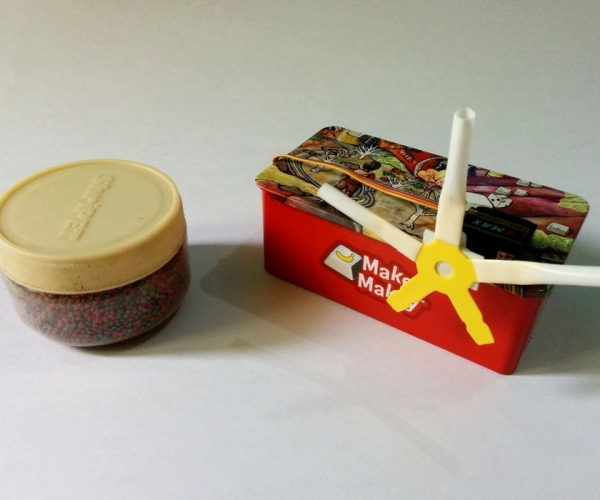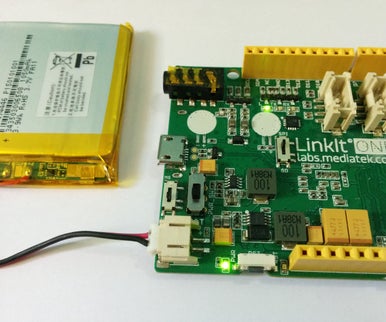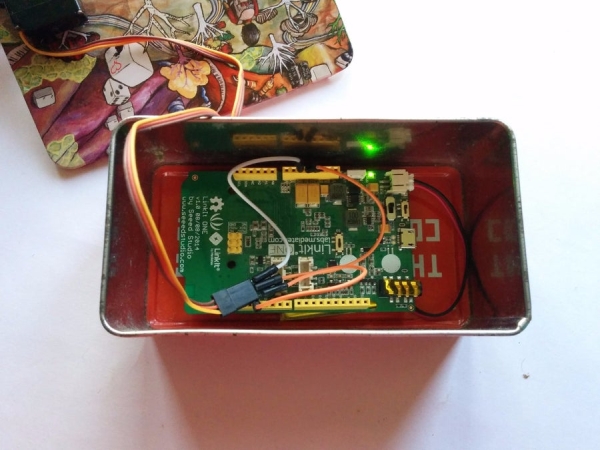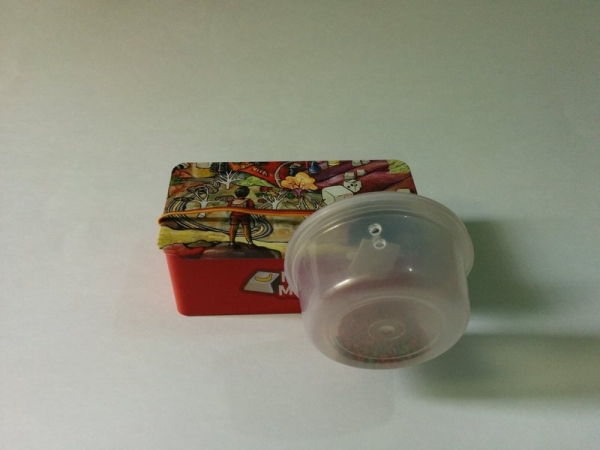In the past couple of instructables I have been using the LinkIt One board, the LinkIt One board is great for IoT projects and in this instructable I’m going to show you how to build a fish food feeder using the LinkIt One, this project is an upgrade to a project I did a while ago using a Particle core. And the upgrades are

- Lower Power consumption
- Faster Processing Time
- Easy to set up
So lets get started ….
Step 1: Tools and Components

The parts are pretty much the same as the previous instructable, all you need now is a LinkIt One, round plastic case like the one in the image and an enclosure for the project (I used a Makey Makey box to do that). For those of you who are here for the first time, here is a complete list of materials and components required.
- Linkit One
- Servo
- Jumper Wires
- Battery (Included in the LinkIt One box)
- Dual sided tape
Step 2: Circuit

All the connection you need to do is connect the servo to digital pin 3 and the battery to the board.
Next, we need an enclosure for mounting the servo onto and into which goes the Linkit and the Li-ion battery. The servo needs to be glued to the top of the enclosure or the lid of the box, I used double sided tape to make it possible.
To the servo I glued some straws which contain the food (we need to put some in after getting it stuck to the servo), and when the servo moves to certain angle the food from the straw gets dropped into the tank. I have many tiny fishes and a straw scoop of food is enough to feed them.
Step 3: A Better Design

For those people who have a large number of fish or just two big fish and that little scoop of food is not enough here is a better design that you can try.
For this design you need a round container like the one in the picture, drill two holes in one of the sides through which food can drop to the tank. I used double sided tape and got it glued to the servo and when I turn the servo the food will drop into the tank. The amount of food that falls into the tank depends on how many times the servo moves through and fro, but I was able to achieve doping a larger quantity of food into the tank. Plus, you don’t need to keep refilling the straws as you can put a lot more food into the container to carry, making this the better design.
Step 4: Programming

The code to be uploaded to the LinkIt One can be found in the attachments. Make sure you enter your WiFi password and SSID in the code before uploading it. The code creates a web server which you can access and feed the fish.
Source: Fish Food Feeder Using the Linkit One
